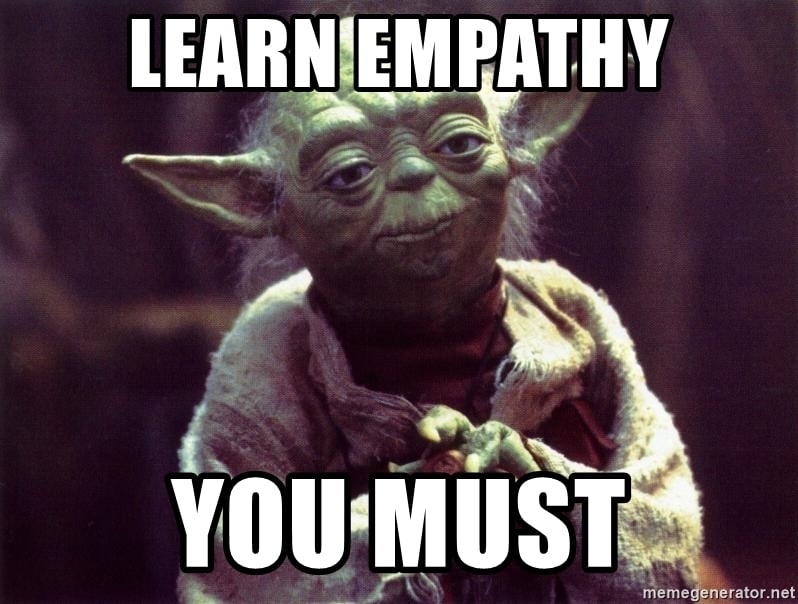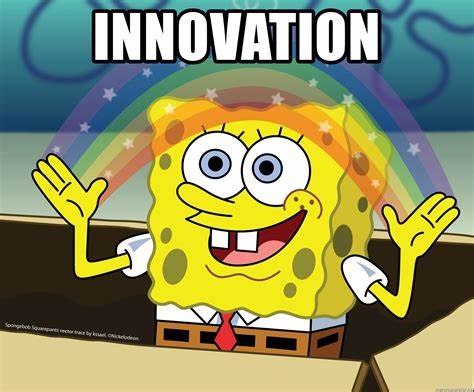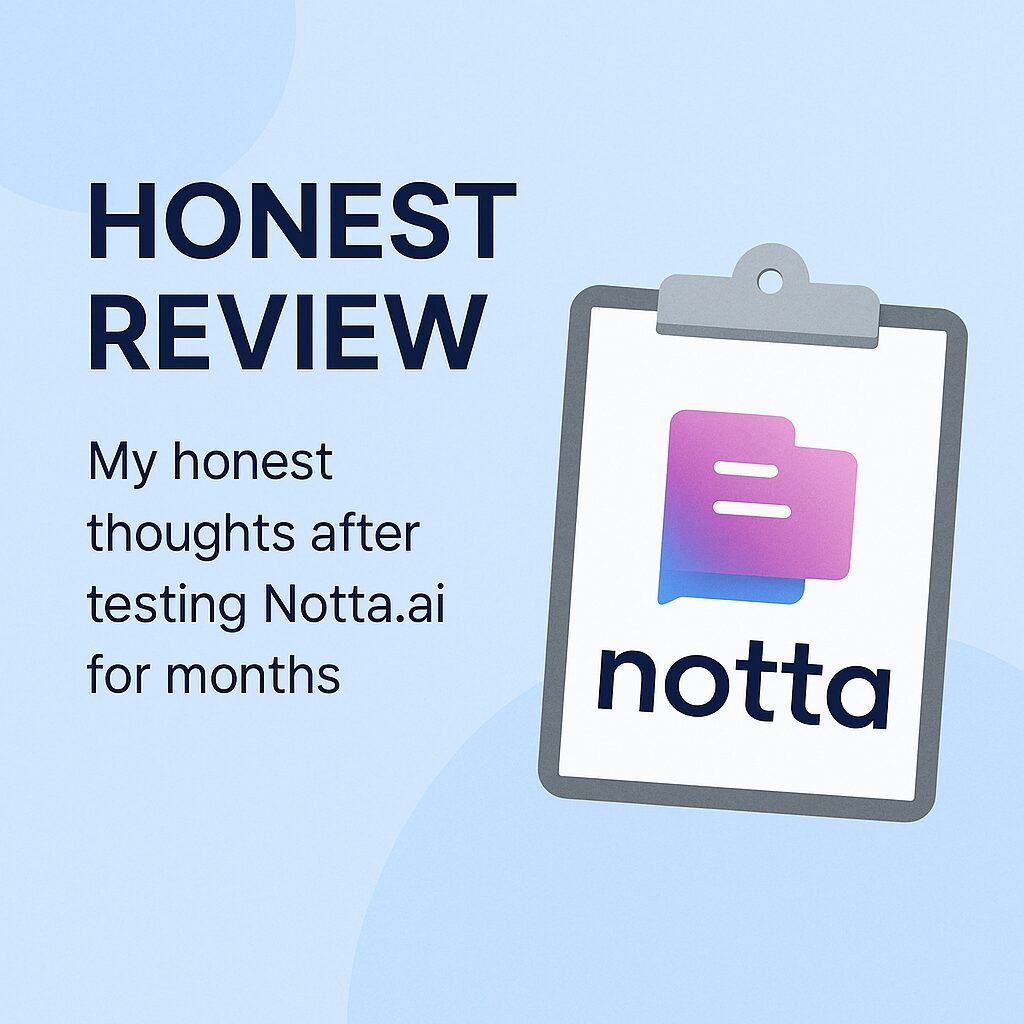Seien wir ehrlich: Ohne kundenorientierte Grundsätze ist ein Unternehmen dazu verdammt, seelenlos zu sein. Aber mit einer Philosophie, die den Kunden stets im Blick hat, können Unternehmen ein Produkt schaffen, das die Nutzer beeindruckt.
Was bedeutet es, kundenorientiert zu sein? Kurz gesagt, Sie stellen Ihre Kunden als oberste Interessengruppe in den Mittelpunkt. Dies ist nicht nur die Aufgabe eines Produktmanagers oder eines Customer Success Teams. Kundenorientierte Prinzipien sollten in der gesamten Organisation umgesetzt werden, von Marketing und Vertrieb bis hin zu Technik und Design.
Warum? Weil kundenorientierte Prinzipien der Schlüssel zur Schaffung eines positiven Nutzererlebnisses sind. Nur wenn Sie die Bedürfnisse, Wünsche und Probleme Ihrer Nutzer verstehen, können Sie sich mit ihnen befassen. Und machen Sie keinen Fehler - der Kunde wird das Podest unter ihm spüren.
Sie werden Ihre Marke respektieren, und Sie heben sich von Ihren Konkurrenten ab, die sich mehr auf das Produkt konzentrieren oder einfach nur "raten", was die Nutzer wollen könnten.
Die Übernahme kundenorientierter Werte setzt oft ein umfassendes Nutzerfeedback voraus. UX-Tests und Nutzerbefragungen helfen Ihnen, Daten für die Entscheidungsfindung zu gewinnen. Diese Erkenntnisse können dazu beitragen, Ihre Strategie nicht nur für das Produkt, sondern auch für den Kundensupport und das Branding zu stärken.
Hier sind 14 kundenorientierte Grundsätze, die Ihnen helfen, Ihr Unternehmen auf die nächste Stufe zu heben.
14 wichtige kundenzentrierte Prinzipien
1. Einfühlungsvermögen
Eines der offensichtlichsten Prinzipien der Kundenorientierung ist das der Empathie. Wie können Sie die Dinge jemals wirklich aus der Perspektive Ihres Kunden sehen, wenn Sie sich nicht in ihn hineinversetzen können? Nun, junger Padawan, um es einfach auszudrücken: Man kann es nicht.

Mit Einfühlungsvermögen meinen wir, dass Sie die Bedürfnisse, Schmerzen und Motivationen Ihrer Kunden so gut wie möglich verstehen und ihnen dann in Ihrem Unternehmen Gehör verschaffen. Nutzerforschung findet allzu oft in einem Silo statt, ohne dass darauf reagiert wird. Drehen Sie die Dinge um: Jede einzelne Person in Ihrem Unternehmen sollte Ihre Benutzer kennen und verstehen. Dabei spielt es keine Rolle, ob Sie in Vertrieb und Marketing oder in Technik und Design tätig sind.
Um dies zu erreichen, müssen Sie eine Möglichkeit finden, die Nutzerforschung auf genaue und zugängliche Weise zu dokumentieren. Stöbern Sie in unserer Liste von UX-Forschungs-Repositories, um eines zu finden, das für Ihr gesamtes Team leicht zugänglich ist. Sie können sogar bekannte und häufig verwendete Software wie Notion in Forschungs-Repositories umwandeln.
Um die Bedürfnisse Ihrer Kunden vollständig zu verstehen, müssen Sie Ihre Nutzerinterviews aufzeichnen und transkribieren. Mit tl;dv, dem branchenführenden remote , ist dies so einfach wie das Atmen. Sie laden einfach die KI von tl;dvin den Chat ein und sie erledigt alles für Sie, einschließlich der Erstellung von Zusammenfassungen am Ende jedes Gesprächs. Mit seiner Meeting-Bibliothek und der leistungsstarken KI-gestützten Suchfunktion funktioniert tl;dv auch als eigenständiges Forschungs-Repository für Nutzerinterviews.
Das Wichtigste an tl;dv ist, dass es bemerkenswert einfach ist, bestimmte Momente aus der Besprechung auszuschneiden, clip und mit jedem in Ihrem Team zu teilen. Sie können mitten in der Besprechung Zeitstempel setzen und dann einen Hyperlink in das Arbeitsarchiv Ihrer Wahl kopieren und einfügen, und voila! Die Stakeholder können sich in nur wenigen Minuten über die Wünsche und Bedürfnisse Ihrer Kunden in ihrer eigenen Stimme informieren.
Kundenempathie kann auch mit anderen Tools wie UserTesting, Hotjar und Qualtrics gefördert werden.
2. Vorurteile in Schach halten
Voreingenommenheit lässt sich zwar nicht völlig ausmerzen, aber man kann ihr definitiv mehr Aufmerksamkeit schenken. Wenn in Ihrem Unternehmen Voreingenommenheit herrscht, kann sie den ersten Punkt beeinträchtigen: Empathie. Voreingenommenheit ist wie eine verschwommene Linse über der Realität. Sie lassen Sie glauben, alles sei normal, aber Sie übersehen die Feinheiten: was die Kunden wirklich wollen.
Das einzige, was Sie erwarten sollten, ist das Unerwartete. Wenn Sie sich auf die Nutzerforschung einlassen und sich überraschen lassen, werden Sie viel mehr lernen, als wenn Sie mit vorgefassten Meinungen hingehen. Das Problem ist, dass die meisten vorgefassten Meinungen unbewusst sind.
Es gibt verschiedene Tools, die Ihnen helfen können, Verzerrungen zu reduzieren. Watson von IBM ist ein großartiges KI-Tool zur Identifizierung von Verzerrungen in Ihrer Forschung. Produktmanager können auch ChatGPT nutzen, um einen ähnlichen Effekt zu erzielen.
Eine weitere Möglichkeit, um Vorurteile im Keim zu ersticken, bevor sie sich ausbreiten und jeden Aspekt Ihres Unternehmens infizieren: der Mom-Test. Wenn Sie Nutzerbefragungen durchführen, sollten Sie den "Mom-Test" im Hinterkopf behalten, um weitaus mehr Erkenntnisse zu gewinnen.
3. Benutzerzentriertes Design
Auch auf die Gefahr hin, noch offensichtlicher zu klingen als der erste Punkt, kann nutzerzentriertes Design nur durch ständige und kontinuierliche Nutzertests entwickelt werden. Als kundenzentriertes Prinzip muss man den Nutzer immer im Auge behalten. Eine halbgare Arbeit ist einfach nicht gut genug. Die Kunden werden sie durchschauen wie Glas.
In unserem anderen Artikel finden Sie die ultimativen Tipps zur kundenorientierten Produktentwicklung. Kurz gesagt: Behalten Sie während der gesamten Zeit, in der Sie das Produkt entwickeln, die Erfahrung des Benutzers im Auge. Produktmanager sollten sie als Bezugspunkt bei wöchentlichen Überprüfungen und anderen Produktentwicklungssitzungen verwenden.
Während tl;dv auch dazu verwendet werden kann, die Verbindung zwischen dem Designteam und dem Produktteam aufrechtzuerhalten, gibt es andere Werkzeuge, die für diese kundenzentrierte Philosophie wichtiger sind.
Figma, Sketch und Adobe XD können Teams bei der Erstellung von benutzerzentrierten Designs und Prototypen unterstützen, während Usability-Testing-Tools wie UserTesting, Hotjar und Maze Teams dabei helfen können, ihre Designs mit echten Benutzern zu testen und zu validieren.
4. Kunden-Feedback
Wir haben dies in jedem der oben genannten Punkte ein wenig behandelt, aber ein starkes Kundenfeedback verdient einen eigenen Platz in dieser Liste kundenorientierter Grundsätze. Es ist zu wichtig, um es zu vernachlässigen.
Sie sollten regelmäßig Feedback von Ihren Kunden einholen, um zu erfahren, wie sie Ihr Produkt nutzen. Was gefällt ihnen daran und was nicht? Wenn Sie es noch nicht wissen, ist es an der Zeit, es herauszufinden!
Mit Kundenfeedback in der Hand kann ein Produktmanager wichtige Entscheidungen treffen, die Ihr Produkt in vielerlei Hinsicht verbessern. Auch die Möglichkeiten, Kundenfeedback zu sammeln, sind unbegrenzt:
- Bieten Sie den Nutzern eine kurze Umfrage an, wenn sie ein Produkt deinstallieren oder ihr kostenpflichtiges Abo deaktivieren
- Bitten Sie die Benutzer, neue Funktionen schnell mit einer Punktzahl zu bewerten
- Nutzerbefragungen, bei denen Sie einem breiten Spektrum von Nutzern spezifische Fragen zur Vorbereitung neuer Funktionen oder Produkte stellen
<
Die Kunst eines guten Kundenfeedbacks liegt in der Fähigkeit, es kontinuierlich zu sammeln. Es muss ein kontinuierlicher Strom sein, sonst verlieren Sie den Kontakt zu Ihrer Zielgruppe und driften auseinander. Wenn Sie ständig Feedback einholen, haben Sie genügend Möglichkeiten, Ihr Produkt oder Ihre Dienstleistung zu verbessern, da Sie wissen, dass Ihre Nutzer dies tatsächlich wollen und nicht nur, was Sie glauben, dass sie es wollen.
Es gibt Dutzende großartiger Tools für die Erfassung von Kundenfeedback. SurveyMonkey, Typeform, Google Forms und Zendesk können Teams bei der Erfassung und Organisation von Kundenfeedback unterstützen.
5. Agile Entwicklung
Eine agile Entwicklungsmethodik ermöglicht es Ihnen, schnell zu iterieren und auf Kundenfeedback in Echtzeit zu reagieren. Dies ist einer der wichtigsten Grundsätze der Kundenorientierung, denn sie helfen den Teams, flexibel und kollaborativ zu arbeiten, um kontinuierlich hochwertige Produkte zu liefern.
Wenn Sie ein kundenorientiertes Produktteam aufbauen möchten, sind dies einige Möglichkeiten, wie die agile Entwicklung dabei helfen kann:
- Schnelle Integration. Agile Frameworks legen den Schwerpunkt auf Flexibilität und schnelle Iteration. Teams können auf der Grundlage von Benutzerfeedback schnelle Entscheidungen treffen und Produktänderungen im laufenden Betrieb vornehmen und so sicherstellen, dass sie nie den Kontakt zu den Standards ihrer Kunden verlieren.
- Funktionsübergreifende Teams. Funktionsübergreifende Teams entstehen in der Regel im Rahmen agiler Konzepte. Mitglieder aus verschiedenen Bereichen arbeiten zusammen, um das Produkt zu liefern, und dies trägt dazu bei, dass die Bedürfnisse des Kunden in jeder Phase des Produktentwicklungsprozesses berücksichtigt und erfüllt werden.
- Zusammenarbeit mit dem Kunden. Agile Frameworks ermöglichen eine enge Zusammenarbeit mit dem Benutzer. Durch regelmäßiges Feedback können die Produktteams sicherstellen, dass das Produkt den Bedürfnissen der Kunden entspricht. Dies ist der beste Weg, um ein Produkt zu entwickeln, das den Kunden wirklich anspricht und seine Probleme auf eine fast persönliche Weise angeht.
- Prioritäten setzen. Wie wir bereits festgestellt haben, sind die Bedürfnisse des Kunden das Wichtigste. Agile Frameworks helfen den Teams, ihre Arbeit nach Prioritäten zu ordnen, um die Bedürfnisse der Kunden zu erfüllen und zu lösen. Produktteams können die wichtigsten Funktionen und Verbesserungen auf der Grundlage der Kundenbedürfnisse auswählen und so sicherstellen, dass sie dem Kunden den größtmöglichen Nutzen bieten.
- Transparente Kommunikation. Agile Frameworks fördern eine transparente Kommunikation und regelmäßige Besprechungen mit allen Mitarbeitern Ihres Unternehmens. Dadurch wird sichergestellt, dass alle auf derselben Seite stehen und auf ein gemeinsames Ziel hinarbeiten. Eine solche Ausrichtung trägt dazu bei, Vertrauen aufzubauen und eine positive Beziehung zum Kunden zu pflegen.
Wenn Sie bei der Produktentwicklung agil vorgehen, können Sie mit dem Kunden in Kontakt bleiben und sicherstellen, dass Sie etwas entwickeln, das ihm wirklich gefällt. Der Einsatz von Projektmanagement-Tools wie Jira, Trello und Asana oder ähnlichen Alternativen kann Teams dabei helfen, agile Methoden zu übernehmen und schnelle Iterationen durchzuführen.
6. Zusammenarbeit
Ein weiteres wichtiges kundenorientiertes Prinzip ist die Zusammenarbeit. Ohne gute Teamarbeit können Sie kein qualitativ hochwertiges, kundenorientiertes Produkt entwickeln. Indem Sie die Kluft zwischen den verschiedenen Entwicklungsteams und Interessengruppen überbrücken, können Sie die Ziele, die Vision und die zu überwindenden Hürden in Ihrem gesamten Unternehmen aufeinander abstimmen.
Kommunikations- und Kollaborationstools wie Slack, Google Meet und Zoom können Teams helfen, in Echtzeit zu kommunizieren und zusammenzuarbeiten, unabhängig von ihrem Standort. Und mit tl;dv können Sie die Zusammenarbeit weiter verbessern, indem Sie Teams mit asynchroner Natur einbeziehen. Wenn jemand aus irgendeinem Grund nicht an einer Besprechung teilnehmen kann, sei es, weil er am anderen Ende der Welt schläft oder einfach krank ist, kann tl;dv jeder und jede die Besprechung in wenigen Augenblicken nachholen.
tl;dv funktioniert sowohl mit Zoom als auch mit Google Meet, und Sie können Clips, Highlights oder Zeitstempel aus einem Meeting direkt auf Slack oder einem anderen Arbeits-Messenger teilen. Vorbei sind die Zeiten, in denen die Anwesenheit bei Meetings wichtig war. Wir befinden uns jetzt in einer neuen Ära, in der Teams mit Mitarbeitern aus der ganzen Welt ihre Ziele abstimmen und aus der Ferne zusammenarbeiten können, um ein Produkt zu entwickeln, auf das sie stolz sein können.
7. Datengestützte Entscheidungsfindung
Was nützt die Nutzerforschung, wenn Sie die gesammelten Daten nicht nutzen? Der ganze Sinn der Nutzerforschung besteht darin, eine neue Sichtweise darauf zu entwickeln, wie Ihr Kunde die Welt und, was noch wichtiger ist, Ihr Produkt sieht. Wie kann es ihnen helfen, wofür nutzen sie es, was brauchen sie davon, und wie können Sie das in die Tat umsetzen?
Durch das Sammeln und Speichern von Nutzerforschungsdaten in einem leicht zugänglichen Repository schaffen Sie eine einzige Quelle der Wahrheit, auf die Ihr gesamtes Unternehmen zurückgreifen kann. Eine strategische Entscheidung sollte nie auf einer "Ahnung" oder Vermutung beruhen. Ihr Produktteam sollte immer in der Lage sein, auf Forschungsergebnisse und datengestützte Erkenntnisse zu verweisen, die der Grund dafür sind, dass das Produkt auf eine bestimmte Weise entwickelt oder geführt wird.
Es gibt Dutzende von Tools, die dabei helfen können, darunter das bereits erwähnte tl;dv. Es gibt nichts Besseres als die Stimme des Kunden, die Ihnen sagt, was er will, und seine Mimik und Gestik, die die Emotionen hinter seinen Worten verraten.
Auch andere Analyse- und Datenvisualisierungstools wie Tableau, Google Analytics und Mixpanel können Teams bei der Erfassung und Analyse von Daten für die Entscheidungsfindung unterstützen.
8. Niemals aufhören zu innovieren

Es ist leicht, in die Komfortzone abzurutschen und immer wieder das Gleiche zu tun. Aber was heute funktioniert, funktioniert morgen vielleicht nicht mehr. Man muss offen bleiben und bereit sein, bestehende Rahmenbedingungen, Strategien und Grundsätze zu hinterfragen. Das ist der Schlüssel, um Ihr Produkt wettbewerbsfähig zu halten.
Alle reden von Innovation, als sei sie etwas Magisches, und greifen mit bloßen Händen nach dem Rauch, um sich ein Stück davon zu ergattern. In Wirklichkeit können Sie innovativ sein, wenn Sie Ihre Ohren offen halten. Hören Sie auf Ihre Kunden, und sie werden Ihnen genau sagen, wie Sie innovativ sein können.
Es gibt mehrere Tools, die Teams dabei helfen sollen, den gesamten Innovationsprozess von der Ideenfindung bis zur Umsetzung zu managen. Wenn dies für Sie von Interesse ist, fallen mir IdeaScale, Brightidea und Spigit ein.
9. Förderung einer Kultur des Wissens- und Ideenaustauschs
Ermutigen Sie jeden in Ihrem Unternehmen, seine Ideen einzubringen, egal wie wild und pikant sie auch sein mögen. So wie die ausgefallensten Mythen und Legenden einem Funken Wahrheit entspringen, steckt in den verrücktesten und umstrittensten Ideen ein Funken Genialität. Es ist Ihre Aufgabe, die Nuggets zu finden.
Wenn eine Unternehmenskultur neue Ideen wirklich willkommen heißt, muss Innovation folgen. Das ist eine Art universelles Gesetz. Die kreativen Energien, die hin und her schwappen, wirken wie eine Art Druck, der Ihr Produkt schließlich auf die nächste Stufe katapultiert. Stellen Sie sich vor, Sie säßen alle auf einer geothermischen Spalte, die aber nicht mit heißem Wasser, sondern mit kreativen Säften und Erfolg befeuert wird.
Okay, das war nicht die beste Analogie, aber wenn Sie eine gesunde Kultur des Austauschs schaffen, schaffen Sie ein Umfeld, in dem Innovation gedeihen kann. Nutzen Sie Ihre alltäglichen Tools für die Zusammenarbeit, um diese Ideen festzuhalten: Trello, Asana und Notion eignen sich alle gut.
10. Automatisieren und Skalieren
Die Welt hat einen weiten Weg zurückgelegt, wenn es darum geht, KI als wichtiges kundenorientiertes Prinzip zu würdigen. Aber hier sind wir nun, mit Tools, die Aufgaben fünfmal schneller erledigen können als wir mickrigen Menschen es können.
@tldv.io Geschrieben von ChatGPT #inception #chatgpt #ai #openai #meeting #corporate
♬ Originalton - tldv.io - KI-Meeting-Recorder
Vor allem Produktteams sollten sich moderne Technologien zunutze machen, um ihre oft langwierigen und komplexen Aufgaben zu beschleunigen und zu vereinfachen. Mehr Produktivität ist meistens eine gute Sache, vor allem in der Welt der Produktentwicklung.
Tools wie HubSpot, Pardot und Marketo können Teams bei der Automatisierung von Marketing-, Vertriebs- und Kundendienstaktivitäten unterstützen, während Software wie Zapier bei der Automatisierung von Workflows zwischen verschiedenen Anwendungen helfen kann.
Wir befinden uns auch in der richtigen Zeit, um den Aufstieg des KI-Meeting-Assistenten zu erleben. Selbst Ihre virtuellen Meetings können mit einem Tool wie tl;dv.
11. Personalisierung
Einer der wichtigsten Grundsätze der Kundenzentrierung ist die Personalisierung. Können Sie sich eine bessere Benutzererfahrung vorstellen als eine, die auf einen bestimmten Benutzer zugeschnitten ist? Personalisierte Erlebnisse gehen auf die spezifischen Bedürfnisse und Vorlieben eines jeden Kunden ein. Wenn es Ihnen gelingt, dies in Ihr Unternehmen zu integrieren, werden Sie Ihre Kunden mit Sicherheit für immer für sich gewinnen.
Die Kehrseite der Personalisierung ist die Privatsphäre der Nutzer. Nicht jeder möchte ein maßgeschneidertes Erlebnis, wenn dies bedeutet, dass seine Benutzerdaten gegen ihn verwendet werden. Behalten Sie dies im Hinterkopf, wenn Sie daran denken, die Erfahrung Ihrer Nutzer mit Ihrem Produkt zu personalisieren.
Segment, Tealium und Lytics sind Kundendatenplattformen, die Ihr Team bei der Erfassung und Vereinheitlichung von Kundendaten unterstützen, während Personalisierungsplattformen wie Optimizely, Dynamic Yield und Evergage Teams bei der Erstellung und Bereitstellung personalisierter Kundenerlebnisse helfen können.
12. Transparenz
Es gibt keinen besseren Weg, die Herzen Ihrer Kunden zu gewinnen, als ihnen gegenüber völlig transparent zu sein, vor allem, wenn Sie sich für die oben beschriebene personalisierte Erfahrung entscheiden. Lassen Sie die Nutzer genau wissen, was Sie mit ihren Daten machen, wie Sie sie speichern und wie sie sich abmelden können.
Es ist auch wichtig, klare und genaue Informationen über alle anderen von Ihnen angebotenen Dienste zu geben, einschließlich der Angaben, was in einem Abonnement enthalten ist (und was nicht), oder über mögliche Fragen oder Probleme, auf die Nutzer mit Ihrem Produkt stoßen könnten. Stellen Sie den Kunden an die erste Stelle und respektieren Sie seine Privatsphäre.
Tools wie Intercom, Help Scout und Freshdesk können Teams dabei helfen, Kunden per E-Mail, Live-Chat und über andere Kanäle klare und genaue Informationen zu liefern.
13. Reaktionsfähigkeit
Versuchen Sie immer, auf die Bedürfnisse und Anliegen Ihrer Kunden einzugehen. Sprechen Sie mit ihnen auf einer persönlichen Ebene und bemühen Sie sich, alle Probleme schnell und effektiv zu lösen.
Ein gutes Kundenserviceteam kann hier helfen, aber es sollte in ständigem Kontakt mit dem Produktteam stehen. Richten Sie gute Kommunikationskanäle ein, damit ein Produktmanager die Schmerzpunkte der Nutzer viel besser verstehen kann. Es ist sogar eine gute Idee, dass Produktmanager gelegentlich bei Tickets des Kundensupports mithelfen, um den Schmerz der Kunden wirklich zu spüren. Ebenso kann der Kundensupport verstehen, was das Produktteam unternimmt, um das Problem zu lösen, so dass er seine Antworten aktualisieren und den Kunden wissen lassen kann, dass an seinem Problem gearbeitet wird.
Zendesk, Freshdesk und Help Scout sind großartige Kundenservice- und Support-Tools, die Teams dabei helfen können, Kundenanfragen und Probleme zeitnah und effizient zu beantworten.
14. Kundenwerbung
Eines der wichtigsten, aber am wenigsten beachteten kundenorientierten Prinzipien ist die Kundenfürsprache. Dabei geht es darum, sich für seine Kunden einzusetzen, auch wenn dies bedeutet, dass man sie und Entscheidungen, die ihnen nützen, vor Entscheidungen stellt, die bequemer oder profitabler sind.
Natürlich erwartet niemand von Ihnen, dass Sie sich selbst in den Ruin treiben, wenn Sie so kundenfreundlich sind, aber ein Unternehmen, das sich unendlich viel Mühe gibt, um seinen Kunden den Rücken zu stärken, ist eines, an das sie sich immer erinnern werden. Und all ihren Freunden davon erzählen...

Um die gleiche Art von Loyalität zu erreichen, die Woody und Buzz zu Andy haben, stehen Ihnen einige Softwareoptionen zur Verfügung. Vor allem UserVoice und Delighted können Teams dabei helfen, die Kundenzufriedenheit zu messen und sich für ihre Bedürfnisse einzusetzen. Ein Meeting-Recorder wie tl;dv kann dabei helfen, videobasierte Nutzererkenntnisse in Plattformen wie Slack, Hubspot, Notion oder Confluence einzuspeisen. Diese Erkenntnisse sind reich an Emotionen und lassen sich leicht weitergeben, so dass die Stimme des Kunden in der gesamten Organisation allgegenwärtig wird. Das Ergebnis? Eine Roadmap und Strategie, die wirklich kundenorientiert ist.














